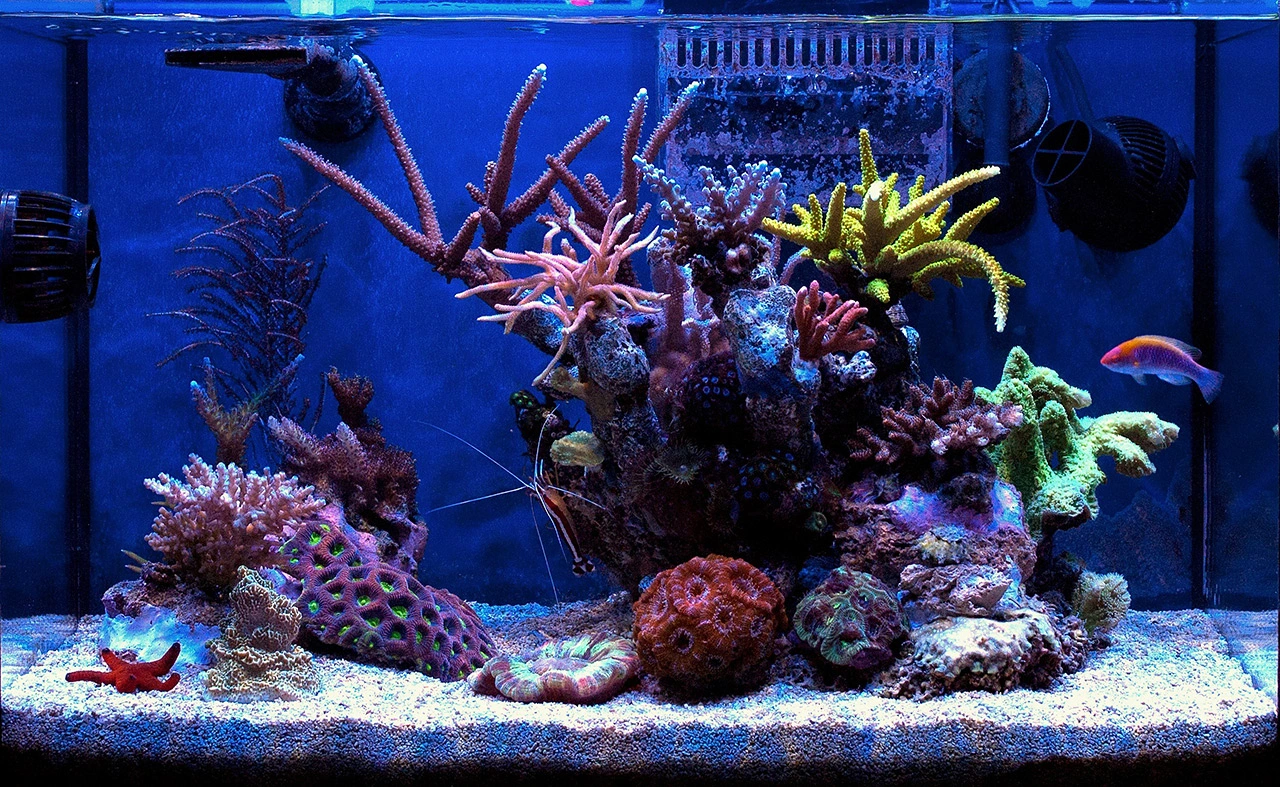Stunning 20-Gallon Reef Tank – NanoTopia's TOTM | NanoReef

Tank Specifications
Volume: 20 Gallons / 75 Liters
Dimensions (L × W × H):
23.5" ×
13.5" ×
16.0"
60.0cm ×
34.0cm ×
41.0cm
Equipment List
- Salt: H2Ocean
Frequently Asked Questions
How do I choose the right equipment for my reef tank?
Choosing the right equipment for your reef tank depends on various factors such as tank size, type of coral, and your overall budget. Key equipment includes a high-quality protein skimmer, appropriate lighting (LEDs are popular for SPS corals), reliable filtration systems, and a robust heater. It's advisable to research various brands and read reviews from other reefers to find equipment that matches your tank's needs.
What type of filtration system is best for a reef tank?
A good filtration system should effectively remove toxins and nutrients while maintaining the bio-logical balance of the tank. The Zeovit system, for example, is highly regarded for its ability to enhance water quality and promote coral growth. Additionally, incorporating live rock and a sand bed can create a natural filtration scenario that benefits your aquarium's ecosystem.
What lighting setup is recommended for SPS corals?
SPS corals generally require high-intensity lighting, and LEDs, like the Vertex Illumilux fixtures, are popular choices due to their energy efficiency and customization options. Ensure that your lights produce the right spectrum (including blue and white) and are adjustable to mimic natural daylight cycles.
What should my water parameters be for a successful reef tank?
For a healthy reef tank, the general parameters should be as follows: 1. Salinity (SG): 1.025; 2. Temperature: 78-80°F (25-27°C); 3. pH: 7.9 - 8.4; 4. Alkalinity (KH): 8-12 dKH; 5. Calcium: 400-450 ppm; 6. Magnesium: 1250-1350 ppm; 7. Nitrate: 0.01-5 ppm; 8. Phosphate: 0.00-0.03 ppm. Regular testing of these parameters will help ensure the health of your corals and overall tank.
How often should I perform water changes, and how much should I change?
It's generally recommended to perform a water change of 10-15% weekly for a reef tank. This routine helps to maintain water quality, replenishes essential trace elements, and removes toxins build-up. Use high-quality salt mix and RO/DI water for best results.
What is the best routine for cleaning and maintaining the tank?
A good maintenance routine includes cleaning the skimmer neck daily, changing filter socks every couple of days, and blowing off the sand bed surface every two days to prevent detritus build-up. Monitor and test water parameters regularly and adjust dosing of supplements as needed.
How do I properly feed my corals and fish?
Feeding corals should be done once a day with a variety of foods. This can include specialized coral foods, phytoplankton, and small meaty foods. Turn off the skimmer for 2 hours after feeding to allow your corals to absorb the nutrients. For fish, feeding them twice a day with a high-quality diet like frozen Mysis or Cyclop-eeze is beneficial for their health.
What are some signs that my corals or fish are unhealthy?
Some common signs of distress in corals include discoloration, tissue loss (STN or RTN), and lack of polyp extension. For fish, look for signs like lethargy, refusing to eat, or visible lesions and fungus. Regular monitoring and the ability to notice subtle changes will help you respond quickly to any issues.
What precautions should I take to prevent pests like Acropora Eating Flatworms?
Regularly inspect your corals for any signs of pests and be proactive in quarantine new corals before introducing them to your main tank. Using a good quality dip solution can eradicate larvae before they establish. Being vigilant and catching these issues early is crucial for maintaining coral health.